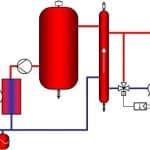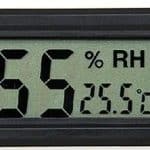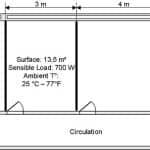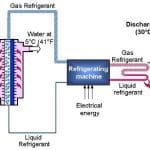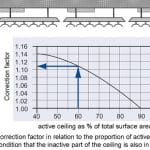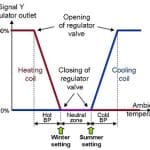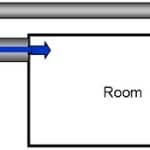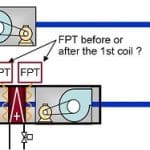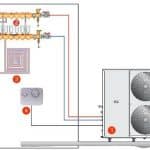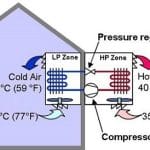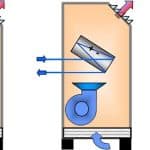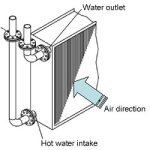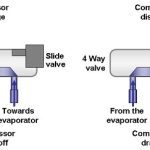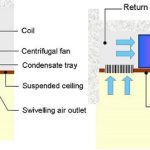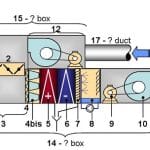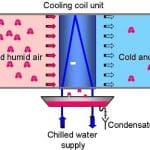Divergence between AFUE and SEER Ratings : Uncovering Cost Efficacy
Are you unsure about the difference between AFUE and SEER ratings? Homeowners are often perplexed by these acronyms which can leave them feeling like they’re stuck in a swirling ocean of HVAC terminology. Let us take a deep dive into the murky depths of this costly conundrum to reveal exactly how understanding the divergence between these ratings can uncover cost efficacy.
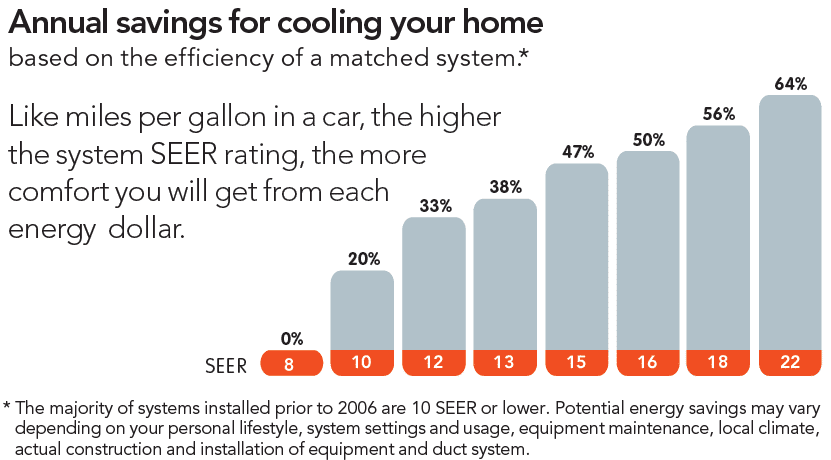
Part 1: Understanding SEER Ratings
SEER, which stands for Seasonal Energy Efficiency Ratio, is an important measure of the cooling efficiency of air conditioners and heat pumps. It can be determined by calculating the total cooling output of a system over a typical cooling season, divided by the total electricity used to power the system.
The higher the SEER rating, the more efficient the system and consequently, energy costs will be lowered.
What is a typical SEER rating for an air conditioner?
The average minimum standard set by the United States Department of Energy for central air conditioning systems is 13 SEER (Seasonal Energy Efficiency Ratio). However, modern models available on the market have ratings as high as 25 SEER, and some new products even feature variable speed fan motors that push the efficiencies of these systems up to 30 SEER.
How does SEER rating affect energy efficiency and cost savings?
It is important to keep in mind that higher SEER ratings mean higher wattage usage so it’s important to balance overall efficiency with running costs. Nevertheless, increasing your SEER rating from 10 to 16 can reduce your cooling costs by approximately 50%.
That’s because more efficient air conditioners use less energy to produce the same amount of cooling power.
Part 2: Understanding AFUE Ratings
AFUE stands for Annual Fuel Utilization Efficiency and it is a factor used to determine the efficiency of furnaces or boilers. This measurement is calculated by dividing the amount of heat produced over one heating season, against the amount of fuel used to create it.
As with SEER ratings, higher AFUE ratings indicate higher efficiency levels which result in lower running costs for homeowners.
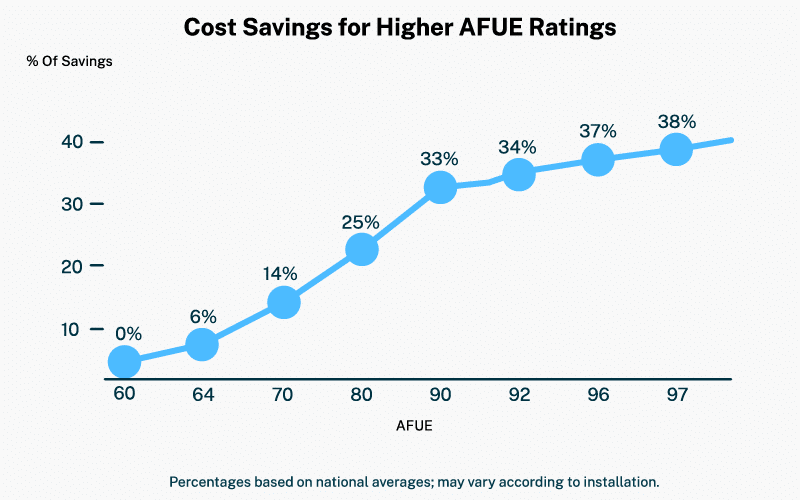
What is a typical AFUE rating for a furnace?
In 1992, The US Congress passed minimum Federal standards for furnace efficiency. At this point in time, these standards stated that all new furnaces had to have an AFUE rating of 78% or greater.
What this means is that 78% of its fuel consumed will be converted into usable heat while only 22% will go out through exhaust gas.
How does AFUE rating affect energy efficiency and cost savings?
The higher your furnace’s AFUE rating is, the more money you can save on fuel costs. For instance,, if you compare two different furnaces with identical outputs but with different AFUE ratings- 80% and 56%, respectively- they would use different amounts of fuel each year to produce that exact same output.
The difference between their annual fuel usages could translate into potential cost savings.
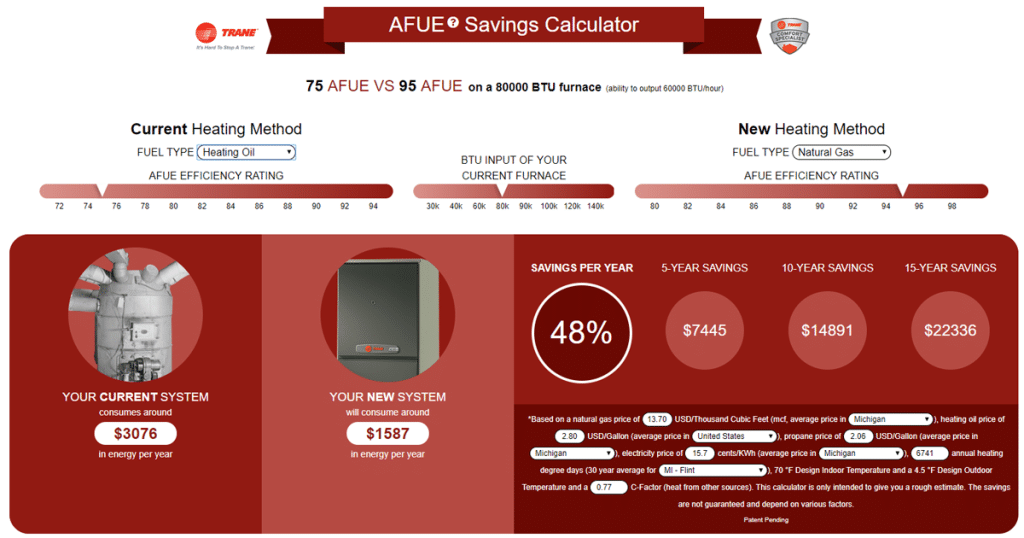
Part 3: Differences between SEER and AFUE Ratings
What are the main differences between SEER and AFUE ratings?
The biggest difference between both ratings lies in what they measure. While SEER measures cooling performance over an entire season, AFUE measures how much heat a furnace produces over one year using fuel such as natural gas or propane.
Additionally, when it comes to their calculations, note that cooling output in terms of BTU (British Thermal Units) per hour is considered when determining a system’s SEER while thermal output in terms of BTU per hour/per cubic foot/per degree Fahrenheit is considered when determining its AFUE.
How do SEER and AFUE ratings impact heating and cooling equipment performance?
The higher the SEER rating, the more efficient the air conditioner will be. This means that it will use less energy to produce the same amount of cooling power.
Similarly, the higher the AFUE rating, the more efficient the furnace or boiler will be. This means that it will use less fuel to produce the same amount of heat.
What are some examples of how SEER and AFUE ratings can impact energy consumption and cost savings?
A good example to illustrate this is a central air conditioning system with an 18 SEER rating compared to one with a 12 SEER rating. The 18 SEER system operates at an efficiency which is 50% greater than the 12 SEER system, resulting in up to 35% lower annual cooling costs for homeowners.
Furthermore, if we compare two furnaces with different AFUE ratings- 80% and 56%, respectively- due to its higher efficiency level, the 80% AFUE model would save homeowners approximately 8% on total fuel usage.
How can homeowners choose the right SEER and AFUE ratings for their heating and cooling equipment?
It is important for homeowners to consider both ratings when deciding on a new HVAC system as these factors play a significant role in potential cost savings. When searching for a new system, homeowners should consider their local climate and desired comfort level in order to determine which SEER and AFUE ratings suit their needs best.
Additionally, they should take into account any tax savings they may be eligible to receive by upgrading to a high efficiency unit.
Want to learn more ?
Have a look on our cooling classes :

